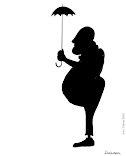This week
Materials:
- pencil
- pen
- eraser
- paper (printer paper, notebook, etc)
- colors (colored pencils, crayons, watercolor, etc)
- alternatives to the above: smart phone or tablet drawing app.
Day 87: yokai
I found this book at the library, Manga Art for Everyone by Danica Davidson and Rena Saiya, and thought it would be a good jumping off point for a drawing. I choose the four characters in the book that appealed to me:
- shojo manga (shojo girl in Japanese; manga targeting teenage girls)
- shonen manga (boys’ comics; manga targeting adolescent boys)
- nekojin (cat person)
- yokai (beings from old Japanese folklore)
- Oni, the Japanese Demon
- Tengu, the long nosed guardian of the mountain
- How to Draw a Tengu mask by theBrokenPuppet. Rick is a tattoo artist and you can see how this discipline affects his design, creating a careful line drawing with distinct colorations that can be duplicated in a tattoo.
- Yurei, the ghost worthy of horror movies
- Kappa, the sneaky boy from the river
- In Kappa's Dream: Making a yokai illustration by Atelier Sentô (6 minutes, 12K views) the artist traces the drawing and colors it with watercolor.
- Akaname, the bathroom monster
- Ashiarai Yashiki, the giant foot
- Tanuki, the spirit of the forest
- Kitsune, the multifaceted fox
- Bakeneko, the ghost cat
- Rokurokubi, the long necked monster
- Yama Uba, the witch wearing a kimino
- Kasa-obake, the prankster umbrella
Day 88: zentangles
- First create a palette of doodle designs.
- On a piece of paper, draw lines to create 9 rectangles.
- In each rectangle draw a doodle pattern.
- On a clean piece of paper draw the outline of the first letter of your name
- Using your palette of doodles as guides, fill in the outside of your letter's design.
Here are the videos of the zentangles palette and the my zentangles “A”:
Day 89: gesture drawing
Day 90: manga hair
Art Senpai How to Draw Anime Hair Like a Pro (8 minutes, 4.1K views)
- Structure and shape
- Proportion
- Perspective
- Line Art
- Details
Day 91: outdoor sketching
Day 92: drawing comics
- basic materials: Ryan suggests using pencils between 2H and 2B (2H, H, F, HB, B, 2B)
- red and blue pencils: he uses red pencils to lightly rough in his designs. He then uses his 2B to pencil in his preliminary design. He scans this and eliminates the red lines in his digital drawing app.
- getting started: Ryan demonstrates making various marks with the tip and sides of his pencil.
- primitive shapes:
- thinking with primitive forms
Day 93: texture: hair
In How to Draw Hair (7 minutes, 2M views) Stan Prokopenko once again does a wonderful job of giving us an overview of the do's and don'ts of drawing hair followed by guiding us through the process he uses to create a well formed drawing of hair.




































